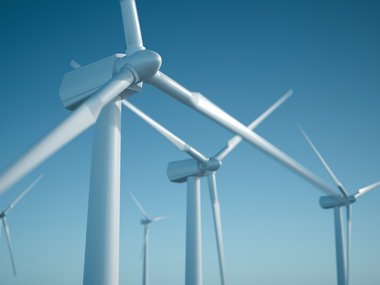Star Power ... the Next Energy Source?
Sometimes we want a bit of extra star power: shining, sparkling and oh-so-full of energy. They say imitation is the sincerest form of flattery, so why not copy the stars? Literally!
Our Sun is a star, and this ball of mainly hydrogen gas gives off the massive amounts of energy that allows life to thrive on Earth thanks to nuclear fusion. With the growing need for other sources of sustainable and low carbon emission-producing energy, scientists asked, “could it be written in the stars?”
What is Our Current Nuclear Energy Method?
Before we can explore how nuclear fusion could help future energy needs, let’s review what an atom is, and how atoms are used in our current nuclear energy method: fission. Atoms are the building blocks of the universe, made from three particles: protons, neutrons and electrons. The nucleus of an atom contains the protons and neutrons, while the electrons orbit around the nucleus. When a nucleus containing many protons and neutrons is split in a nuclear fission reaction, energy is released in the form of heat.

In today's nuclear reactors, fission occurs when a neutron crashes into the nucleus of a uranium atom and splits it apart, releasing energy and more neutrons. The newly released neutrons repeat the fission process when they hit nearby uranium nuclei, creating a chain reaction of more energy that generates lots of heat. The heat generated by the nuclear fission process is used to boil water at each plant and generate steam, which we use to power our everyday needs.

The current nuclear fission process is working, which is great, but scientists are prioritizing nuclear fusion research. Why? Fusion could produce up to four times more power than fission!
What is Nuclear Fusion?
During the process of nuclear fusion, two atomic nuclei join together to make a single nucleus. Vast amounts of energy can be released when small nuclei fuse together. Many fusion reactions are possible, but most research focuses on combining the nuclei of two different types of hydrogen to create two products: energy and a high-energy neutron, which can be used to help power our planet.

In addition to hydrogen fusion being more powerful, it gives off helium as a byproduct—a huge advantage over the radioactive waste created by fission.
Scientists have their work cut out for them, though. Nuclear fusion is difficult because it often requires more energy to create the reaction than the reaction produces.
In an exciting recent breakthrough at the Lawrence Livermore National Laboratory in California, scientists generated nuclear fusion that produced more energy than they put in. This is only the second time net-energy gain has happened at the laboratory, with the first occurring just seven months prior.
As this technology evolves, scientists are optimistic about what a switch to nuclear fusion could look like. When nuclear fission was discovered in 1938, it took just 13 years for the first functional power plant to begin operation. Today, fission power plants are used to produce between 6-10% of the world's electrical power. Imagine what a fusion power plant could produce, and how quickly it might become operational with the technological advancements we’ve seen since 1938!
You might not have to wish on a star to see nuclear fusion become reality in your lifetime. Many countries, including the US, are aiming to bring a fusion power plant to life by 2050. It’s just another shining example of how science helps make our collective future bright!

